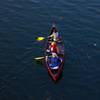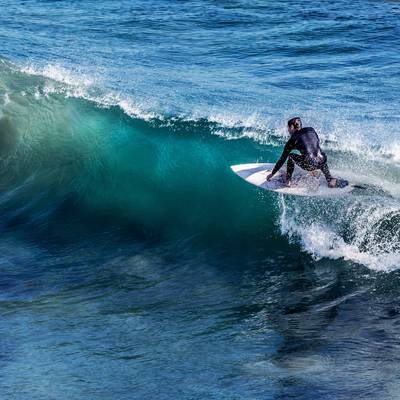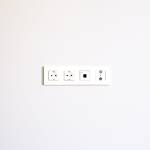General
Transport
People
Accomodation
Food & Drink
Sightseeing
 What to see in Spain?
What to see in Spain?
 What to do in Spain?
What to do in Spain?
 Are there any festivals in Spain?
Are there any festivals in Spain?
 What are the best tours to take in Spain?
What are the best tours to take in Spain?
 What are the best beaches in Spain?
What are the best beaches in Spain?
 Are Madrid and Barcelona city cards worth buying?
Are Madrid and Barcelona city cards worth buying?
 Which museums in Madrid offer free entry?
Which museums in Madrid offer free entry?
Legal
Money
Safety & Health
Family travel

What should I know about surfing in Spain?
Some of the best waves in Europe are found on the Iberian Peninsula, and Spain’s long sun-kissed coastline is the perfect destination for a surf trip. Any time of the year.
Thanks to the country’s varied geography and incredible swell consistency, you’ll always find a wave to ride. Therefore, you can surf in Spain all year round.
For beginner surfers, the best time to go is during summer and early fall, when the waves are smaller and friendlier. This is also a good time for intermediates looking to brush up their skills. For intermediate and advanced surfers, the best time to go surfing in Spain is between September and April. Fall and spring swells are bigger than in summer, producing larger and well-shaped waves. The conditions are very reliable and the beaches are less crowded.
Winter brings in huge swells, but there are plenty of sheltered spots, so you can find both powerful and gentler waves. With that being said, for beginners and experienced surfers alike, fall is the best time to be surfing in Spain. The swells start to pick up, but the waves are not too powerful yet. The water is still warm, the weather is a little cooler and more pleasant than during summer, and the crowds would have dispersed.
The water on the Atlantic coast of mainland Spain stays rather cool throughout the year. In northern Spain, water temperatures peak in the range of 20-24ºC in August, and drop all the way to 12-13ºC in March.
During summer, you can surf in a 2mm long-sleeve shorty. However, if the wind is up, you’ll need a 3/2mm wetsuit. During the coldest winter months, you’ll need a fully-sealed 4/3mm wetsuit and 3mm booties, although a 5/3 would be even better, especially for longer sessions.
In southern Spain, water temperatures peak in the range of 20-25ºC and drop to 15-17°C in winter. You can surf in a 2mm top during the warmer summer months, and you’ll need a 3/2mm or a 4/3mm wetsuit during winter.
Spain’s surf culture is as diverse as the country itself. The history of surfing in Spain is quite remarkable, as the sport appears to have emerged in several places across the country almost simultaneously, in the 1960s. Today, surfing is a popular pastime. Most surf beaches get crowded during summer, which is also when you’ll find a higher number of surf schools and surf camps operating.
While there are occasional waves on Spain’s Mediterranean coast, near Barcelona, the Atlantic is where all the action is. The surf in Spain is split into two main sections by Portugal – northern Spain (Basque Country, Cantabria, Asturias, and Galicia) and southern Spain (Andalusia).
Northern Spain is a surfer’s paradise. This stretch of coastline is dotted with surf spots for all levels and tastes – mellow beach breaks, long points, hollow reefs, punchy rights and lefts, and challenging waves like the world famous Meñakoz and Mundaka in Basque Country.
Near Bilbao, Mundaka has been at the core of European surfing for the last four decades. It is considered the best left-hander on the continent, and it’s quite possibly the best rivermouth wave in the world too.
In the Basque Country, Zarautz is the surf capital of Spain and the most popular beginner surf beach in the country. It is also one of the world’s best all-around beaches, offering waves for both beginners and advanced surfers.
Nearby, San Sebastian is Spain’s culinary capital. Add to that a buzzing nightlife and quality surf, and there you have it – one of the world’s best surf towns! La Zurriola Beach is only a short walk from town, and has gentle beginner waves.
Cantabria is home to some of the best surf spots in Europe. Here, Playa de Somo is one of the longest beach breaks in the country and one of the best places to learn to surf in Spain.
Asturias is dotted with beach breaks for all levels, the most famous being Playa de Rodiles, a left-hand hollow wave for more experienced surfers.
With beaches facing every direction, Galicia is a swell magnet. It is home to Pantin, a super-consistent beach break that hosts the annual Pantin Classic Galicia Pro, the oldest Spanish surfing championship and the second oldest in Europe.
In Southern Spain, Andalusia is famous for its strong winds and is more popular for kitesurfing. It is here that you’ll find Tarifa, the most renowned kitesurfing destination in Europe. Andalusia does offer some surfing opportunities as well, but not as reliable and of a lower quality than the ones found on the northern coast.
Near El Palmar, Cádiz is the best surfing destination in southern Spain. This long beach is dotted with a variety of waves for all levels to enjoy.
Surf camps are quite common in Spain, and are one of the most budget-friendly options. You’ll have accommodation, surf lessons or guidance, transfer to the surf spots, and surfing equipment all in one. Plus, you’ll get to hang out with fellow surfers. Click here to find a perfect surf camp for you.

What are the Spanish people like?

Where to buy alcohol in Spain and how much does it cost?

What can I bring home from Spain?

What type of adapter do I need for the outlets?

How do I get around Spain?

https://3dfins.eu/blogs/media-spotlight/top-surfing-destinations-around-the-world